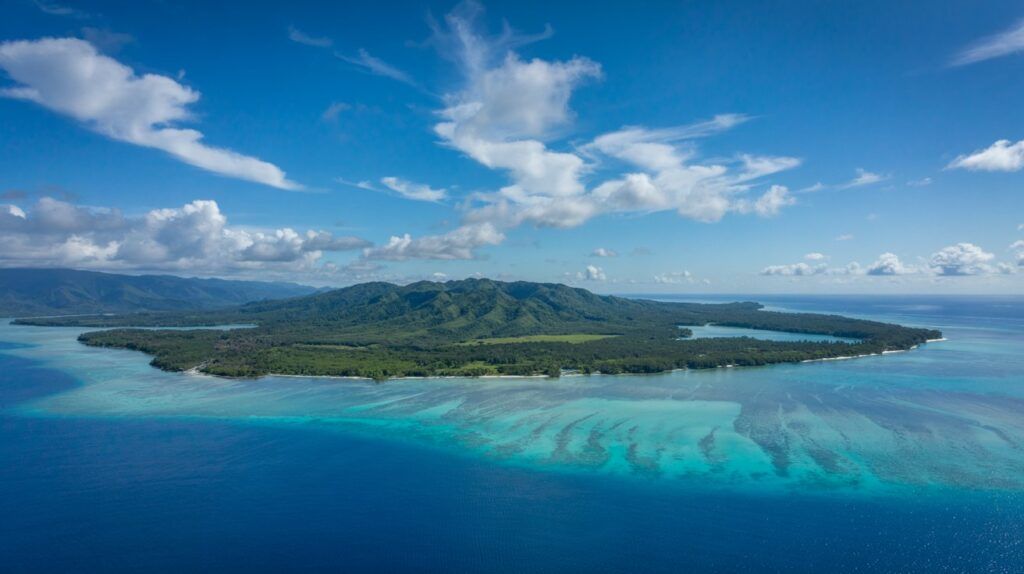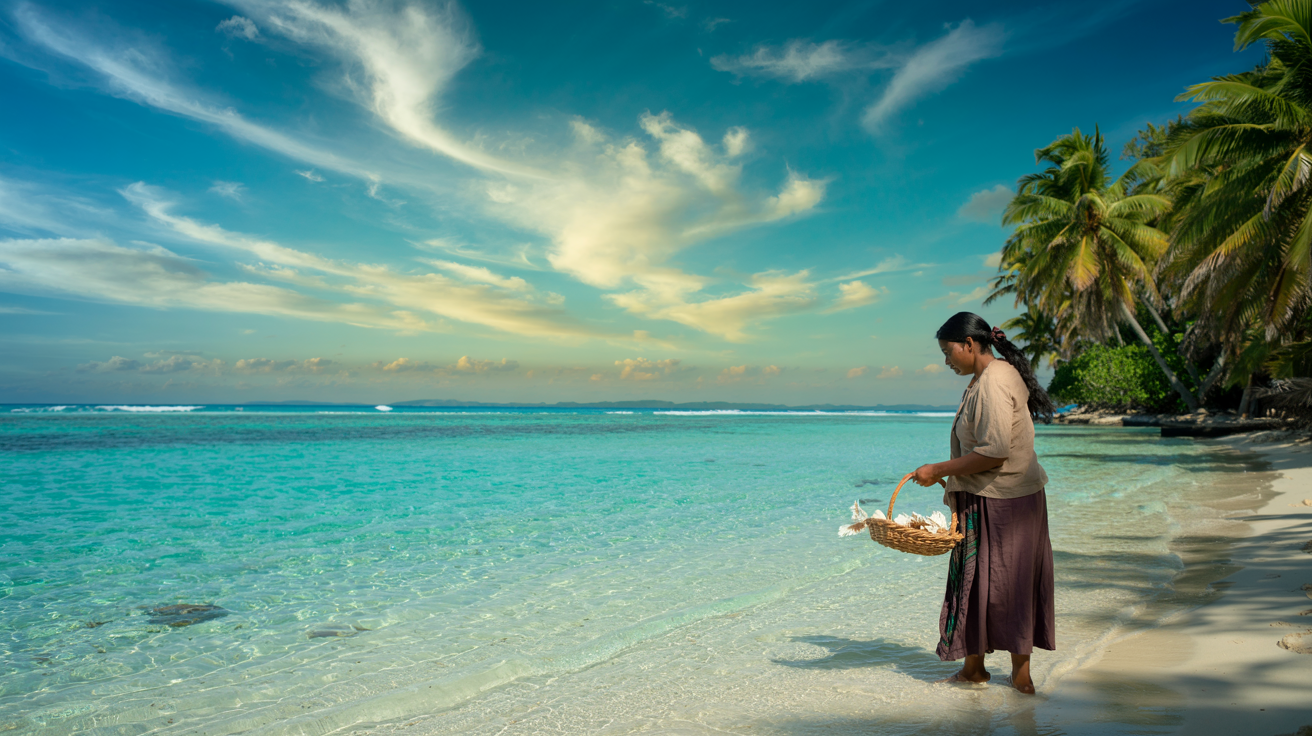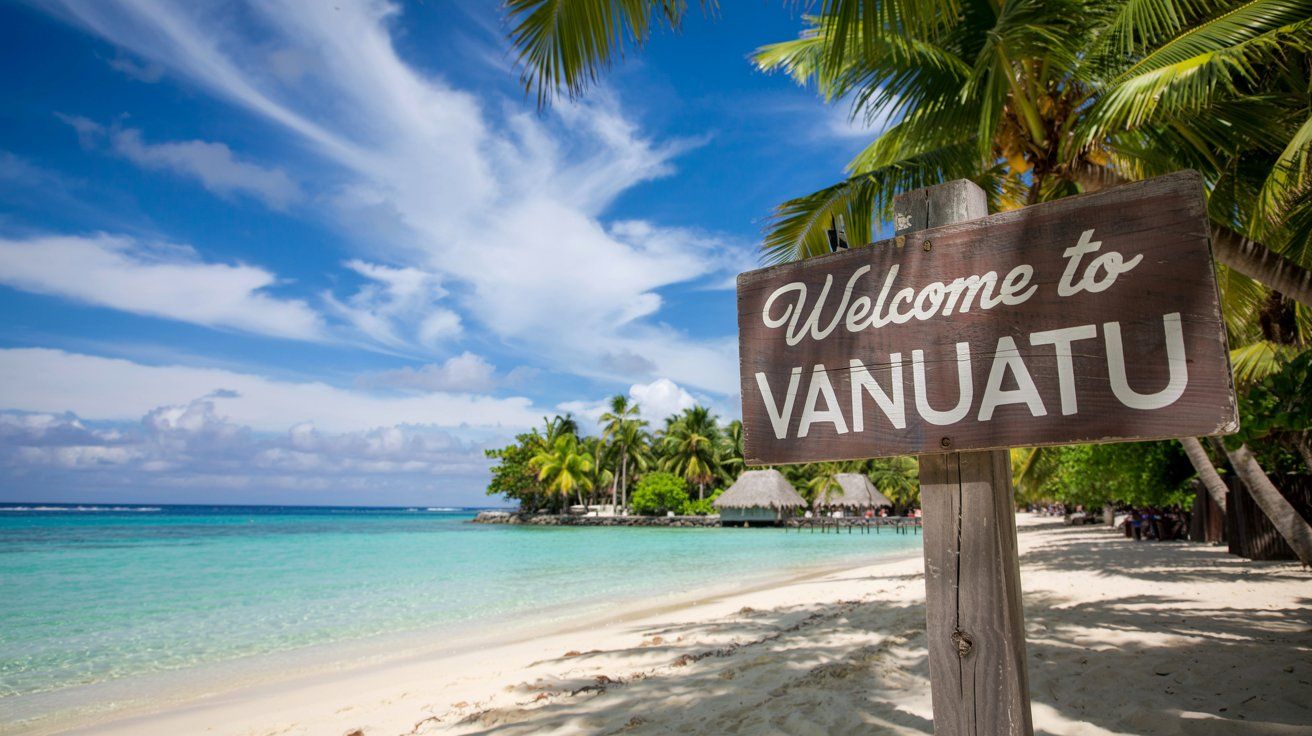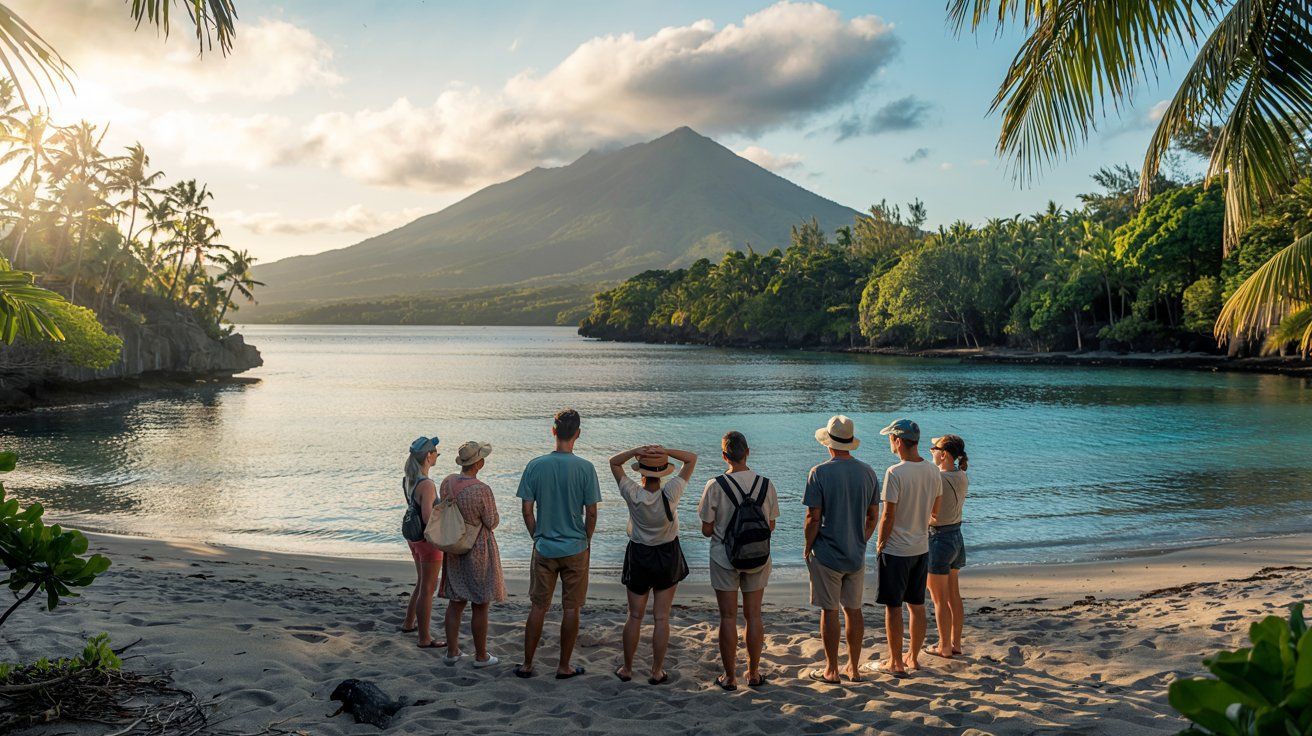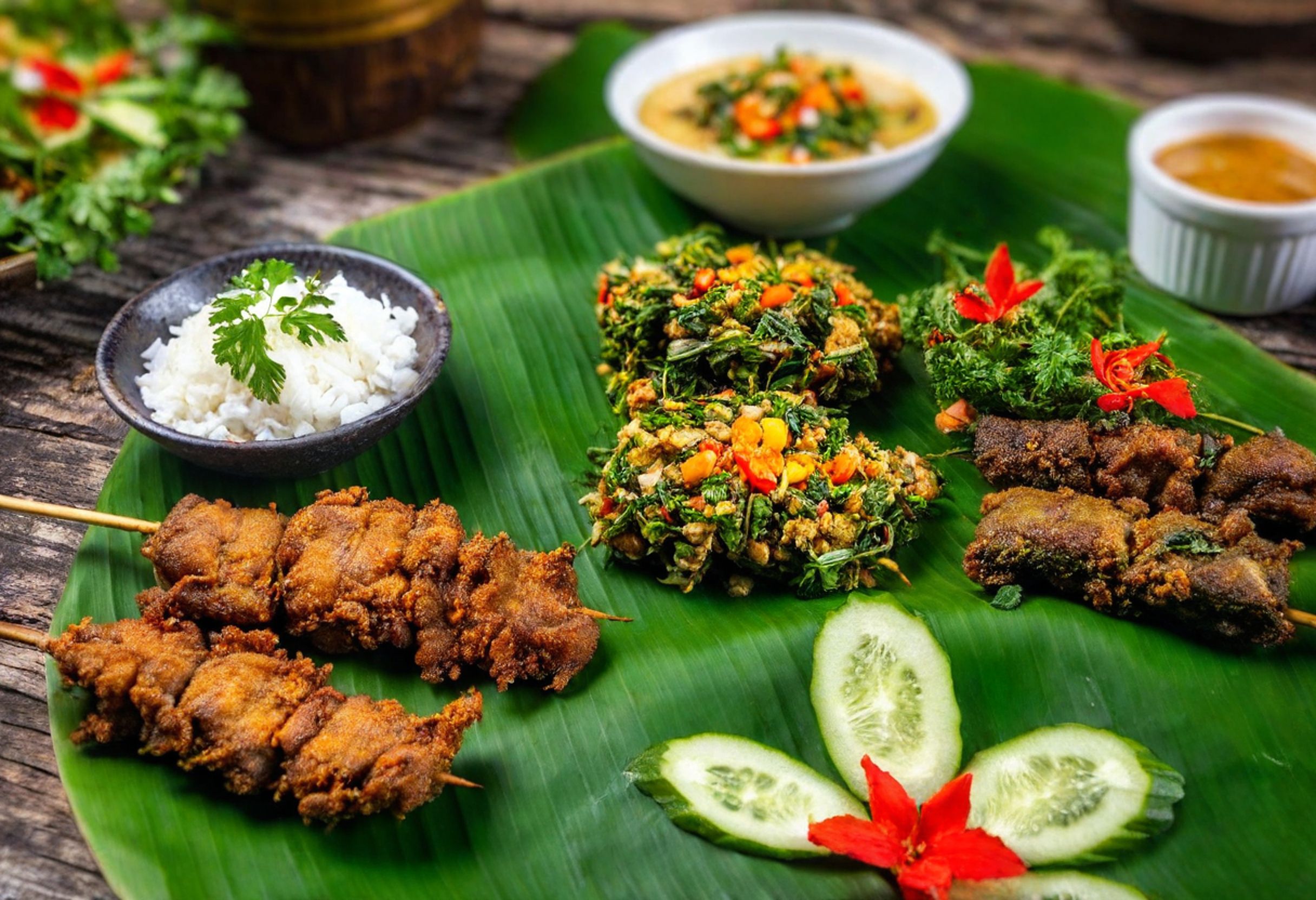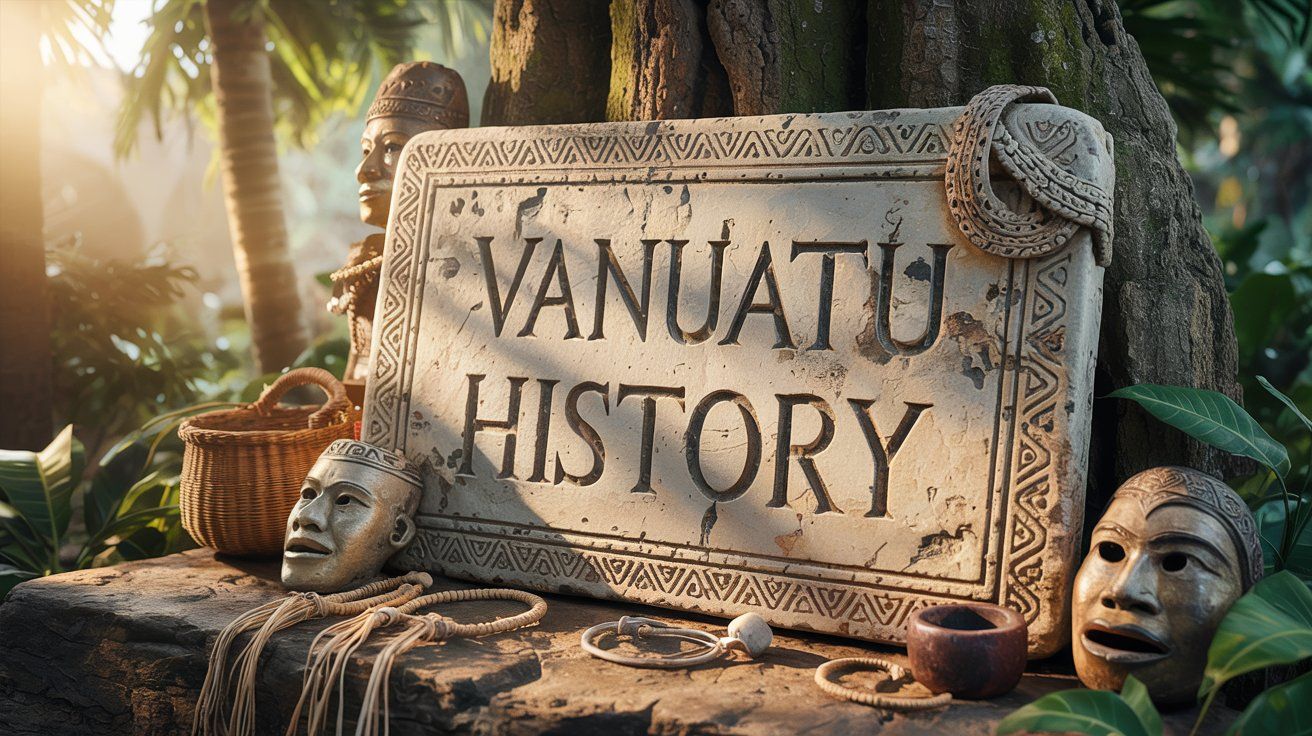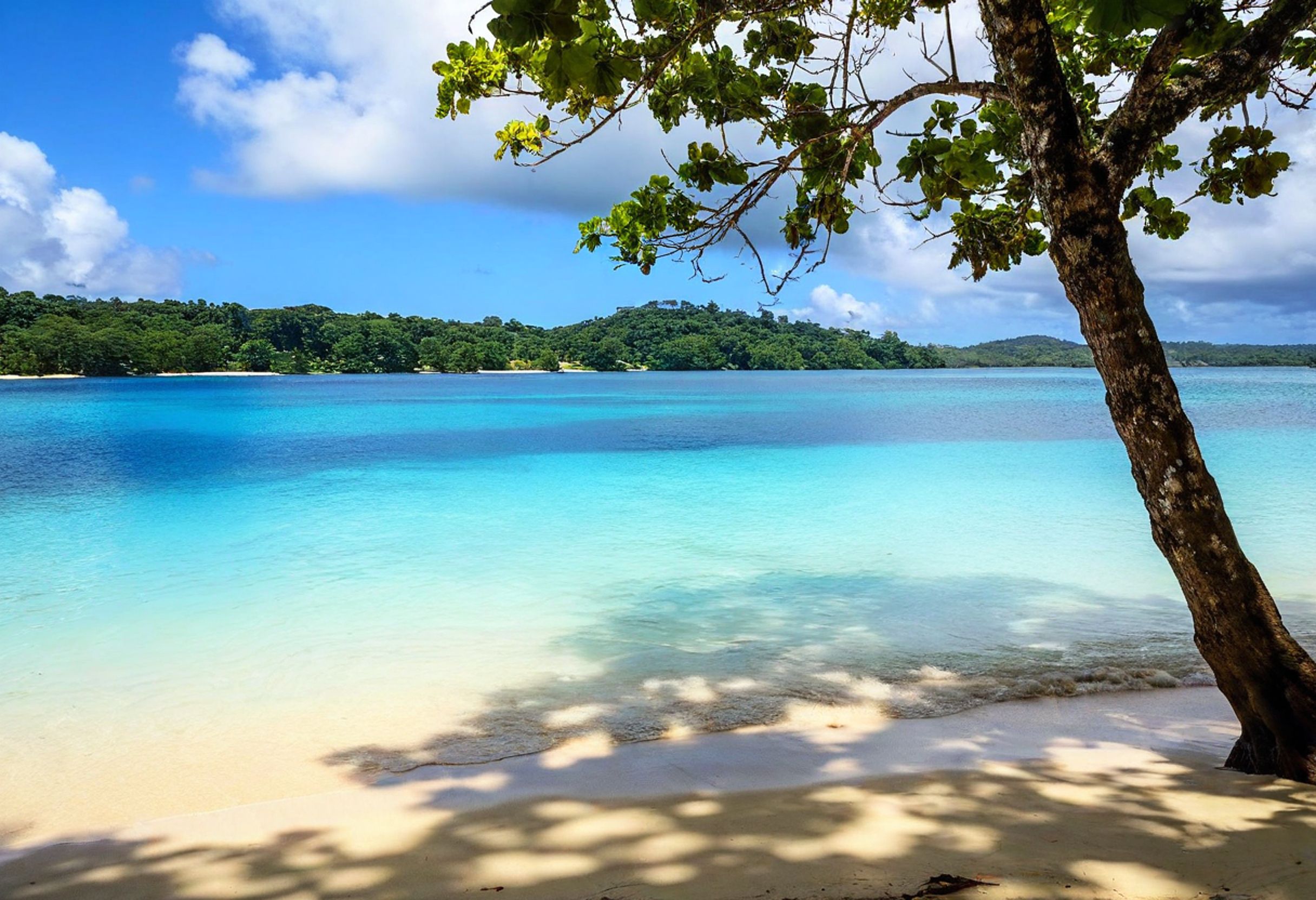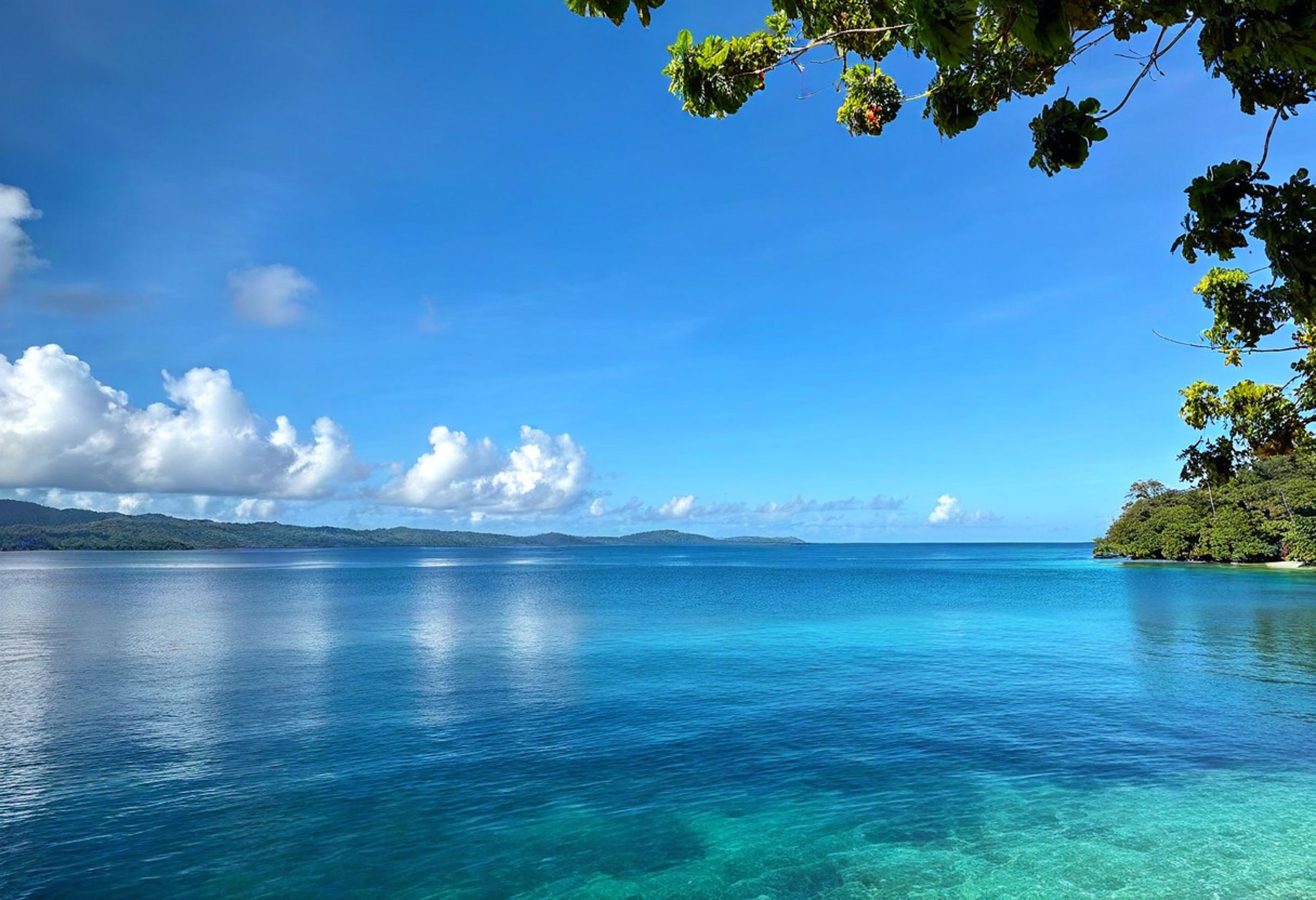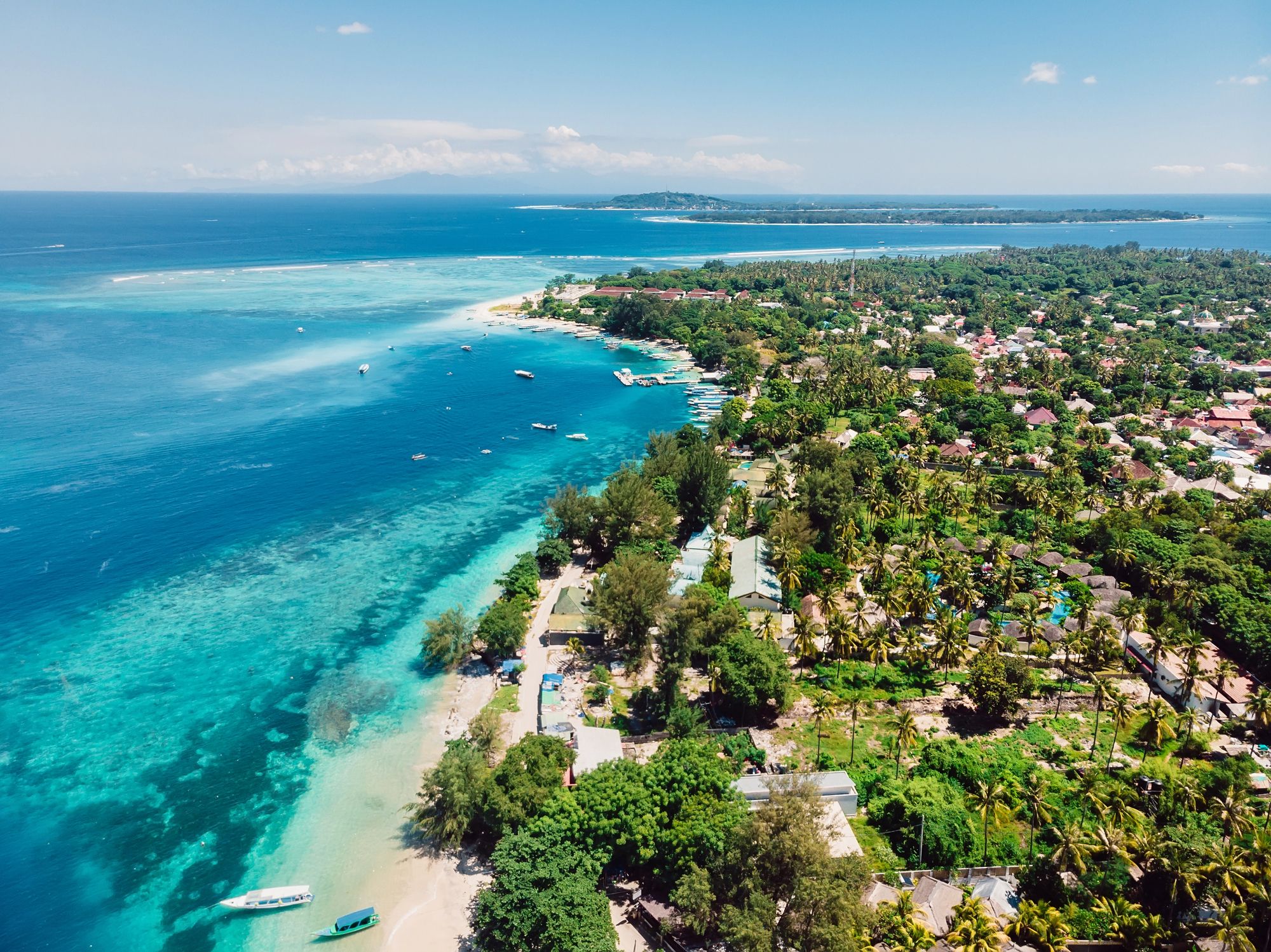Pentecost Island sits about 190 kilometers north of Port Vila, Vanuatu’s capital. This mountainous place pulls in travelers who want a real look at traditional Melanesian life. Most people know Pentecost for its land diving ceremony (Naghol), held every year from April to June. But if you stick around, you’ll find the island has a lot more to offer—rich culture, wild scenery, and a way of life that’s barely changed for generations.
You won’t find towns or tourist resorts here. Instead, small villages are scattered across steep hillsides. If you stay overnight, it’ll probably be in a simple guesthouse or with a local family. Most folks here rely on farming and still follow traditional customs that haven’t really changed much.
From overwater bungalows to beachfront resorts, find your perfect stay in this island nation of more than 80 islands. Instant booking with best price guarantee!
Browse Accommodations Now
If you’re thinking of visiting, get ready for an adventure that’s a bit off the map. The rugged terrain, old-school villages, and lack of development can be tough at times, but that’s what makes Pentecost special. You’ll get a warm welcome, and the chance to see customs you won’t find anywhere else in Vanuatu.
Overview of Pentecost Island
Pentecost Island gives you a front-row seat to traditional Vanuatu life. The wild landscapes, strong customs, and distance from modern development make it one of the most culturally rich islands in the country.
Geographic Location
Pentecost Island sits up in the north of Vanuatu, out in the South Pacific. It’s part of Penama Province, along with Ambae and Maewo.
The island runs about 60 kilometers from top to bottom, but it’s pretty narrow. Steep ridges cut along its length, with the tallest peaks climbing over 900 meters.
Pentecost gets a lot of rain, which keeps everything lush and green. The climate is tropical, with clear wet and dry seasons. There aren’t any real towns, just villages linked by rough roads and footpaths.
History and Culture
People around the world know Pentecost for its land diving ritual—Nagol or N’gol—which happens between April and June. Men leap from tall wooden towers, vines tied to their ankles. It’s wild to watch and actually inspired modern bungee jumping.
Most people here still stick closely to “kastom”—traditional customs. Farming is the main way of life, and not much has changed in generations.
Christian missionaries showed up in the late 1800s, so now there’s a mix of traditional beliefs and Christianity. Even so, chiefs still lead the villages, and old customs run deep.
Because Pentecost is a bit out of the way, cultural practices have lasted here while they’ve faded elsewhere in Vanuatu.
Languages Spoken
For a small island, Pentecost has a ton of languages—more than five, actually. Different areas have their own, thanks to long-standing separation between communities.
Everyone uses Bislama, the national creole, to talk with each other. It’s an English-based creole that helps break down language barriers.
English and French are the official languages, and kids learn them in school, but you won’t hear them much in daily village life. In tourist spots, you’ll get by with basic English, but in the more remote villages, you might need some help.
Most people here juggle several languages—local, Bislama, and a bit of English or French. That’s just how it is in rural Vanuatu, and it’s a big part of the island’s identity.
Getting to Pentecost Island
It takes a bit of effort to reach Pentecost Island since transportation options are pretty limited. The island does have two airports, and you might find the occasional boat coming or going.
Flights and Airlines
Air Vanuatu runs flights to Pentecost from Port Vila and Luganville on Espiritu Santo. Planes land at Sara Airport in the north or Lonorore Airport in the south. Each spot gets about three flights a week.
The trip from Port Vila takes about an hour. The planes are small—think 8 to 19 seats—so you’ll want to book ahead, especially if you’re coming for land diving season (April-June) when it gets busy.
Flights can change or get canceled if the weather turns bad or there are other issues. It’s smart to leave some wiggle room in your plans.
Expect to pay between 12,000 and 18,000 VUV (roughly $100-160 USD) one-way, depending on the time of year.
Cruises and Ferry Options
You’ll see the occasional cruise ship off Pentecost, especially during land diving season. If you’re on one, they’ll get you ashore with tender boats.
There’s no regular ferry. Sometimes cargo ships take passengers from Port Vila or Santo, but they don’t run on a schedule and conditions are basic. It’s really only for the adventurous.
You can hire a charter boat from nearby islands. A taxi boat from Ambae to Pentecost costs around 8,000-10,000 VUV ($70-90 USD) and takes an hour or two, depending on the sea.
Don’t risk sea crossings in bad weather—stick with reliable operators.
Internal Transport
Once you’re on the island, getting around is simple but basic. No buses, almost no rental cars.
Locals use pickup trucks as taxis between villages. Short rides cost about 500-1,000 VUV ($4-9 USD), while longer trips can run 3,000-5,000 VUV ($27-45 USD). Always agree on the price before you go.
Honestly, walking is often the easiest way to explore nearby areas. Villages are usually connected by footpaths rather than roads.
If you need to get from one end of the island to the other and you’re short on time, consider flying between Sara and Lonorore airports. The road trip takes 4-5 hours and can be rough.
Best Time to Visit Pentecost
When you visit Pentecost really shapes what you’ll experience. The island changes a lot through the year, and your interests will decide what’s best.
Weather and Climate
Pentecost’s climate is tropical, with a dry season from April to October. Temperatures sit between 64°F and 82°F, and there’s less rain and humidity—perfect for outdoor activities.
The wet season, November to March, brings more rain, muggy air, and the occasional cyclone. The island turns bright green, but heavy rain can make travel tricky, especially on dirt roads.
May and June are especially nice—cooler, not too humid. It’s great for hiking and exploring.
From July to October, you’ll get the best beach weather if that’s your thing.
Land Diving Season
The famous land diving (Nagol) happens only from April to June. This cultural event is why many people come, with men leaping from wooden towers with vines tied to their ankles.
The top spot to see land diving is South Pentecost, especially around Pangi village. During the season, more visitors arrive on the island for the ceremonies.
Elegant resorts, tropical villas, and vacation rentals with immediate confirmation. Experience a culture dating back to 1,300 BC in this breathtaking archipelago!
See Available Properties
If you visit outside April-June, you’ll miss land diving, but you’ll find the south much quieter and, honestly, a bit more authentic with fewer tourists.
If you want the full cultural experience, May is probably the sweet spot—land diving is at its peak and the weather is just right for exploring.
Unique Experiences and Attractions
Pentecost Island brings you experiences you won’t get anywhere else. From ancient ceremonies to wild natural spots, there’s a lot here for travelers looking for something real.
Land Diving Ceremony
The Naghol (land diving) is Pentecost’s claim to fame. Every year, between April and June, men and boys jump from towers up to 30 meters high, with just vines tied to their ankles. It’s the original bungee jump, really.
The ceremony celebrates the yam harvest and shows off bravery. Villagers believe a good dive brings a strong crop. Each jumper picks his own vines, and the goal is to brush the ground with his shoulders for the best blessing.
You can watch this in villages like Lonorore and Wali. Admission fees help the local community. Book early—spaces fill fast. Dress modestly and listen to your guide’s advice so you don’t offend anyone.
Cultural Festivals
There’s more to Pentecost than land diving. The island hosts cultural festivals all year. Villages put on traditional dances, music, and crafts that have been passed down for ages.
The Pentecost Day Festival (usually May-June) is a highlight, full of “kastom” performances—song, dance, storytelling. Locals often invite visitors to join in some of the fun.
Food festivals showcase dishes like lap-lap (root veggies wrapped in leaves) and kava ceremonies. These events are a great way to meet people and get a feel for everyday life.
Popular Cultural Events:
- Yam Harvest Celebrations (March-April)
- Kava Ceremonies (year-round)
- Traditional Dance Performances (weekends in most villages)
Outdoor Adventures
If you love the outdoors, Pentecost delivers. The island has waterfalls, caves, and thick rainforest just waiting to be explored.
Hiking Ideas:
- Waterfall Trek (3-4 hours): Head to Evergreen Cascades Waterfall through thick jungle
- Coastal Path (2 hours): Walk along the coast for ocean views and visits to small villages
- Mount Vulmat (all day): Tackle the highest peak if you’re up for a challenge
Swimming in natural pools is a great way to cool off. On the east coast, you can snorkel along coral reefs just offshore.
Local guides can show you hidden beaches that you can only reach on foot. Many villages offer homestays, so you can mix adventure with a taste of local life.
Beaches and Watersports
Pentecost Island has some gorgeous beaches and plenty of watersports if you want to relax or get active in the clear water.
Top Beaches
Loltong Bay has a stretch of black sand and calm water that’s perfect for swimming. It’s about half a kilometer long, with trees for shade when the sun gets too much.
Pangi Beach, close to the main land diving site, offers white sand and a laid-back vibe. Local kids play here, and it’s a good spot to chat with villagers after the ceremony.
Baravet Bay is quieter, with hardly any visitors. If you want to relax, read, or just listen to the waves, this is your spot.
There aren’t any shops or facilities, so bring your own supplies. Some beaches get strong currents, so ask locals about safe swimming before you jump in.
Snorkeling and Diving
If you love clear water, Pentecost’s got you covered—visibility usually sits between 15 and 30 meters, though it can change with the weather. Some of the best snorkeling spots cluster around Loltong Bay and near Melsisi.
Don’t expect to find much in the way of rental gear. It’s a good idea to pack your own snorkel and mask, since most guesthouses only have a few battered sets (and only if you ask ahead).
Diving’s a bit trickier. Since Pentecost doesn’t have any dive shops, you’ll have to coordinate with operators from Port Vila if you want tanks, guides, or gear.
You might spot:
- Parrotfish and angelfish darting around the reefs
- Sea turtles, especially if you’re up at dawn
- Rays gliding by
- The odd reef shark (they’re not aggressive, so don’t stress)
April to October is prime time for diving—calm seas and the best visibility.
Coral Reefs Exploration
The coral reefs here haven’t suffered the damage you see in some other Pacific hotspots. The northwest coast is where you’ll find the easiest reefs to reach.
Local guides can take you out by small boat for a fair price. These outings usually last a couple of hours and they’ll give you a quick rundown on staying safe around the reef.
A few things to keep in mind:
- Don’t touch or stand on the coral
- Use only reef-safe sunscreen
- Give marine life their space
- Listen to your guide
Over 200 coral species live here, along with more fish than you can count. Mornings are best—winds pick up later, making the water rough and murky.
Accommodations and Where to Stay
Pentecost Island’s accommodation options are simple and authentic. If you want a taste of real Vanuatu life, this is the place. Most places are small, family-run, and give you a genuine glimpse into local culture.
Resort Options
Don’t expect flashy resorts here. Pentecost keeps things modest compared to other Vanuatu islands, but that’s part of the charm. If you’re after something a bit more upscale, Bokissa Private Island Resort sits nearby (not on Pentecost itself) and gives you beach access and extra comforts.
For ocean views, you can’t go wrong with Aniwa Ocean View Bungalows—cozy rooms and a killer coast panorama. Mahi Mahi Beach Villas is another waterfront spot.
These smaller resorts usually offer:
- Simple but tidy rooms
- Fresh-cooked local meals
- Cultural activities
- Land diving viewing (when in season)
Guesthouses and Lodges
Most visitors end up in local guesthouses, which have a real island vibe. Laone Guest House sits right on Laone beach in the north, with three rooms for up to six people—ideal for families or small groups.
Walarua Guest House and Buliva Guest House are also worth checking out, with a mix of traditional and semi-modern island style. You’ll typically get:
Easy booking across stunning accommodations from luxury resorts to eco-friendly retreats. This Y-shaped archipelago offers pristine beaches, active volcanoes, and world-class diving!
Secure Your South Pacific Getaway
- Basic rooms with the essentials
- Shared bathrooms
- Home-style meals
- A chance to experience local culture
- Friendly, family-style hospitality
Guesthouses are easier on your wallet—expect to pay $30-60 USD a night. Book ahead, though. Space is tight, and sometimes it’s tough to get in touch.
Food and Local Cuisine
Pentecost’s food scene is a tasty blend of Melanesian tradition and a touch of French flair. Most meals rely on what’s grown or caught nearby.
Traditional Dishes
Lap lap is the big one—grated taro, yam, or manioc, mixed with coconut cream, wrapped in banana leaves, and slow-cooked in an earth oven (“nakamal”). It’s hearty and filling.
Tuluk is similar, but with meat tucked inside, giving you a kind of island dumpling.
Seafood is everywhere: fish, lobster, coconut crab. Coconut’s a star here too, whether as cream or oil.
Meals usually start with root veggies like taro, yam, or manioc, and there’s always something green—maybe island cabbage or wild greens.
Don’t miss the fruit. Papaya, pineapple, mango, and naus (kind of like a local lychee) are all over the place.
Where to Eat
You won’t find many formal restaurants here. Most meals come from:
Guesthouses and bungalows: Your hosts will cook for you, and honestly, it’s the best way to try real island food.
Village stays: If you’re with a family, expect simple, fresh meals straight from their garden.
Community feasts: If you’re lucky enough to visit during a festival, the whole village gets together for a traditional earth oven meal.
Check out the local markets for fresh produce and snacks. Melsisi’s Wednesday and Saturday markets are the busiest, with plenty of local treats and fruit.
When you eat with locals, thank your hosts. Meals are social events, and you’ll probably hear a few stories along the way.
Travel Tips for Pentecost Island
Pentecost isn’t the easiest place to reach, and it doesn’t have a lot of infrastructure. If you plan well, though, you’ll have a much smoother trip.
Packing and Essentials
Pack light but be prepared. The weather’s hot and humid, so bring breathable clothes. Don’t forget:
- Insect repellent (spray and coils)
- Reef-safe sunscreen (high SPF)
- Modest clothes for village visits—cover shoulders and knees
- Sturdy shoes for rough paths
- Flashlight or headlamp (power cuts happen)
- First aid kit with your usual meds
- Cash in Vanuatu Vatu (no ATMs on Pentecost)
- Portable water filter or tablets
A light rain jacket helps in the wet season. If you want to bring gifts for villagers, useful stuff like fishing hooks or school supplies is appreciated—skip the candy.
Cultural Etiquette
Respect means everything here. Always ask before taking photos, especially of people or ceremonies. Some villages might ask for a small fee.
Wait for a welcome before walking into a village. Dress modestly—shoulders and knees covered. Women should skip shorts and tank tops.
Take off your shoes before entering homes or meeting spaces. If someone offers you food, it’s polite to accept, even if you only have a bite.
Learning a few words of Bislama—like “tankyu” (thank you) or “halo” (hello)—really helps break the ice.
Locals frown on public displays of affection, so keep things low-key.
Health and Safety
Medical care is pretty basic on Pentecost. Bring all your meds with you; the closest hospital is in Port Vila on Efate.
Drink bottled or treated water only. Skip the ice unless you know it’s safe.
Use insect repellent often. Malaria exists here, so talk to your doctor about prevention before you go.
Be careful in the water—currents can be strong, and there aren’t any lifeguards. Don’t swim alone.
Travel insurance that covers emergency evacuation is a must. If something serious happens, you might need air transport to Port Vila or even Australia.
Watch for signs about ceremonies or taboo areas. Some places are off-limits for cultural reasons.
Exploring Neighboring Islands
Pentecost is special, but Vanuatu’s other islands each have their own thing going on. If you have time, check out a few more while you’re here.
Espiritu Santo and Luganville
Espiritu Santo (locals just call it Santo) is the biggest island, northwest of Pentecost. It’s got amazing white-sand beaches and some of the best diving around.
Luganville, the main town, is where you’ll find WWII relics like the SS President Coolidge—a famous shipwreck that’s surprisingly easy to dive, even for beginners.
Champagne Beach is gorgeous, with soft sand and clear water. The blue holes are wild—deep, bright-blue pools you can swim in. Million Dollar Point is cool for snorkeling among old WWII gear.
You can get to Santo in about 45 minutes by plane from Pentecost, or take a boat if you’re feeling adventurous (and patient).
Tanna and Yasur Volcano
Tanna is famous for its active volcano and traditional villages that still keep old customs alive.
Mount Yasur Volcano is the big draw. You can actually stand at the rim and watch lava explode—not something you do every day! The climb only takes about half an hour, so most people can handle it.
After the volcano, check out coffee plantations or visit custom villages where life hasn’t changed much in generations. Port Resolution has black sand beaches—a great spot to relax after all that excitement.
Flights from Port Vila to Tanna take about 45 minutes, and you can connect from Pentecost. Plan to stay at least two nights to really soak it in.
Epi, Malekula, and Ambrym
These three islands don’t see many tourists, but that’s their magic.
Epi Island is peaceful, with beaches where you might swim alongside dugongs (sea cows). The lodges here are tiny but tranquil.
Malekula, Vanuatu’s second-biggest island, is home to several tribal groups. The Big Nambas and Small Nambas tribes welcome visitors and share their traditions if you’re curious.
Ambrym is famous for its twin volcanoes and black magic. The ash plains feel almost lunar. If you time your visit right, you might catch a rom dance—masked performers acting out ancient rituals.
Getting to these islands takes some extra planning—flights and accommodation are limited—but if you make the effort, you’ll come away with stories you won’t find anywhere else.
Aneityum and Efate
Aneityum gives you Mystery Island, an uninhabited paradise with soft white sand and some of the best snorkeling around. Cruise ships swing by now and then, but honestly, most days you’ll wander the beaches with hardly anyone else in sight.
On the main island of Aneityum, you can hike through thick forests and drop by friendly villages where locals show off traditional crafts. It’s a relaxed pace—no rush, just genuine smiles and a sense of curiosity in the air.
Efate, on the other hand, is where you’ll find Port Vila, the capital and the usual gateway into Vanuatu. It’s definitely more developed than the other islands, so if you want a mix of good restaurants, tour guides, or maybe just a bit of shopping, this is your spot.
If you get a chance, check out Mele Cascades just outside Port Vila. It’s a string of waterfalls with natural swimming pools—honestly, it’s hard not to want to jump right in. Around Efate, a bunch of resorts offer overwater bungalows and some top-notch snorkeling spots.
Find available hotels and vacation homes instantly. No fees, best rates guaranteed!
Check Availability Now
Efate connects by regular flights to most other islands, and during peak season, you’ll even find daily flights to Pentecost.

